Developer InExile returns to post-apocalyptic Americana in Wasteland 3, the latest title in the groundbreaking role-playing franchise. In addition to the usual refinements and additions one might expect from a sequel, Wasteland 3 aims to offer a more cinematic experience by investing in 40 hours of voice acting and a provocative soundtrack comprised of delightfully deranged covers of popular songs, reinterpreted to fit in the twisted world of Wasteland.
To that end, the developers turned to Mary Ramos, best known for her work as Music Supervisor for the films of Quentin Tarantino. For Wasteland 3, she assembled a stack of tunes and helped find unique and creative ways to use them to form the backbone of the game’s soundtrack, imbuing the experience with a cinematic quality unprecedented in the genre.
While promoting the release of Wasteland 3, Brian Fargo and Mary Ramos spoke to Screen Rant about their work on the game. The first half of the interview features our one-on-one talk with Brian Fargo, discussing various facets of Wasteland 3, from its inclusion of online co-op multiplayer to the prospect of PS5 and Xbox Series X patches for the title. He also discusses his history of mixing licensed music with video games, like the inclusion of a Devo song in the video game adaptation/spin-off of William Gibson’s seminal cyberpunk novel, Neuromancer. Once Mary Ramos joins the conversation, the focus turns to that precious intersection of music and storytelling and how she worked to give Wasteland 3 its own special sonic identity.
Wasteland 3 is out now on PC, Xbox One, and PlayStation 4.
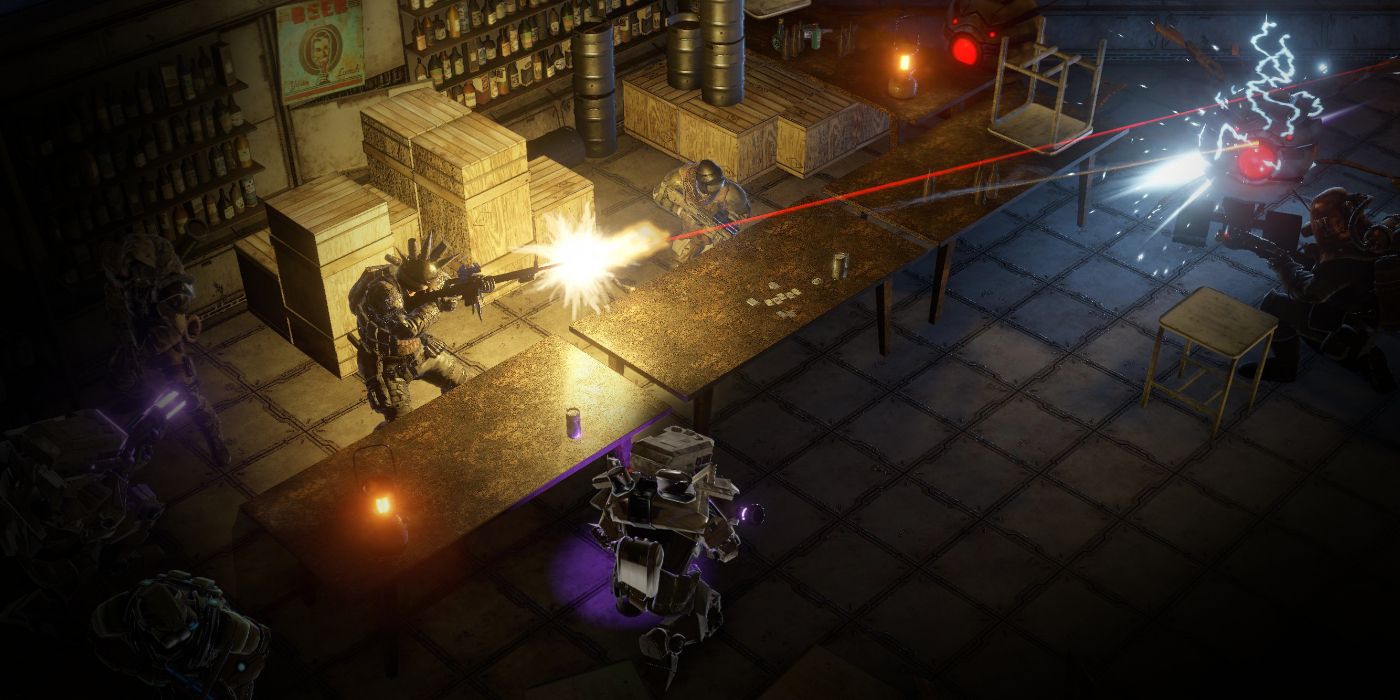
For Wasteland 3, arguably the biggest overhaul compared to the last game comes in the form of audio. Can you talk a bit about how the audioscape has evolved in this new game?
We have nearly 40 hours of spoken dialogue, something we didn’t have in the last one. Then, of course, the music was completely different. We tried some radical new ideas for putting music into combat as an experiment, and people really like it! They like the emotion it’s getting across. It’s fun to watch a streamer because they’ll rock out, or whatever mood strikes them during combat. Usually, combat is just the music picking up in tempo, as opposed to completely cutting away to a whole new soundtrack than what you’ve been using.
And this new soundtrack, it includes licensed covers and stuff, right?
It does! We’ll license a cover, and you’ll hear it one time, maybe two times in the entire game. That’s it. Some people wanted to put it in more places, but it’s like, no. When we watch a film, you hear a soundtrack maybe once in the beginning and once in the end. They don’t try to play it all the time just because they paid for it! I think that was very much the same thing here. The whole concept of the music is that it’s left behind by doomsday preppers who end up being correct. Their music tastes were patriotic songs, church music, and things from the 80s. Anything kind of pop culture in general that sort of drove the Wasteland universe in that way. There’s a version of WKRP in Cincinnati that can be played on the radio today, and that’s just fantastic. We have lots of songs, we have a Wang Chung song. It’s great because they’ve been reimagined by these people. I’ve watched people listen to it and they’re like, “I know this song…” and then it gets to the chorus and they’re like, “Ah, of course! Everybody have fun tonight! I knew I recognized it!” It’s part of the fun, the discovery.
And that’s not something that any streamers will get in trouble with in terms of listening while they’re playing, right?
No, not at all. We’ve done our best to try to clear it because we did pay for those things. It makes it a little bit easier that they’re not the master recordings of the original artists. So the bots that crawl through that don’t necessarily pick it up quite the same. Some of the old stuff, like the biblical Down in the Valley to Pray, those have been out for 100 years and aren’t copyrighted, so those songs aren’t an issue. But yeah, we did think about the bots. The fact that they were re-orchestrated by Mary Ramos helps to make sure that won’t become a problem. And we hope it doesn’t.
I know Tony Hawk’s Pro Skater is coming out this week, and I’m gonna have fun streaming that, but I will have to turn off the music. Cost of doing business, I guess.
Yeah, we had discussions about that. We can do it and tell YouTube we’ve licensed this music, but when you go do it, or anyone else, how does it know? It’s a bit of a tricky situation. For streaming in general with music, in terms of acquiring the rights, I’ve learned a lot on this project. Streaming is a different thing. Like with X Cloud, for example, that’s considered a “live performance,” and that requires a different set of rights for the music than just the straight video game rights.
That’s so complicated!
I’ve learned more than I wanted to know about the subject.
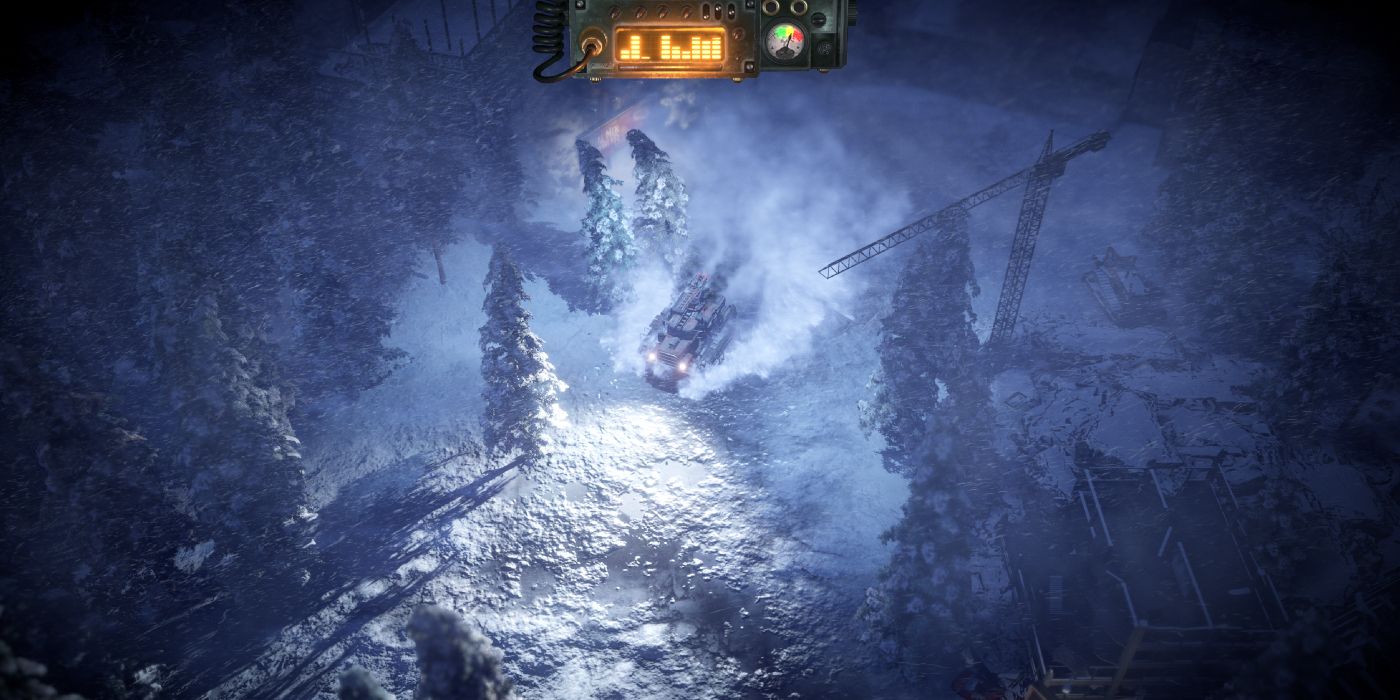
When was the decision made to bring in Mary as someone who can give this game an extra cinematic grandeur.
First, we worked with Mark Morgan, who lays down the atmospheric soundtrack. He did it for the original Fallout series, and he did it for Wasteland 2. So we knew he was coming back. He has an industrial vibe that sets a tone for when you’re exploring and sets a tone for when you’re in combat. But I started thinking about music in general and the media that I consume, and I thought about Tarantino films, how you would have this ultra-violence against music that didn’t necessarily match the scene. And I was always a big proponent of that. And we did that, even back in the original Fallout. That opening scene with The Ink Spots in the background while a guy gets executed. The dichotomy between those two things was always very powerful. So I always liked that. As I was thinking about Tarantino, I thought, hey, why don’t we find… Is there a person who does that for him? Does he do it himself? I didn’t know! So I started doing some research, and lo and behold, I track down Mary. She was right up in L.A. I asked her if she had ever worked on a video game, and she said, “No, I never have!” And I said, “Well, here’s what we’re trying to do, and it’s a bit of an experiment. And I don’t know if it’s even going to feel right, in terms of that jarring change to an original soundtrack. Maybe it won’t feel good, but let’s do some music and see how it feels.” So we did a couple of songs with her and literally dropped it into a combat scene. We played it with the uptempo battle music that everyone’s used to, that they’ve heard a million times, and now let’s drop in Down in the Valley to Pray, or America the Beautiful. How does that feel? And it worked! It was a great experiment. Our audio guys were completely against it. They did not think it was going to be a good idea. We got Mary involved about a year ago, and eventually the audio guys were like, “Okay, you were right, it works. It sounds good!” And we’ve gotten a lot of great feedback. In terms of the art, it was something new to try. And I hope it does help expand the audience for what we’re doing and make it more culturally important.
Do any of these musical goals trace back to 1988 when you were doing the original? Or were you like, “It’d be great if we could have music at all!”
Yeah, it would have been “music at all.” When we did the first Wasteland, the disk was 140 kb. I should probably look, but I think the icon you click on to launch Wasteland 3 is probably the same size as those floppy disks. We ran out of room for text! We did the Neuromancer game back at Interplay, in the late 80s, right around the same time. We worked with Devo on the soundtrack. And we had a snippet of a Devo song, Some Things Never Change, but I want to say we ate up a third of our disk so we could have a snipped of a Devo song at the front end of the game. That’s how costly it was. As a medium, we didn’t get to start thinking about, “What can we do with music?” until CDs became the medium. It was too prohibitive on floppy. Then we went to DVD and it was like, “Holy moley, now we can really do things!” That’s been kind of a fun journey. No matter how much memory you give us, how many pixels you give us, or how much storage you give us, we find a way to max it out in some capacity.
The ‘common knowledge,’ I suppose, is that when it comes to maxing out that space, the music is always the first thing to get cut, especially in older generations.
You know, it’s interesting. When you run through the list of what players list as important to them, music doesn’t make the top list. You’re going to get gameplay, of course, visuals of course, story, whatever. Music’s generally not in the top of the list. But that doesn’t mean it’s not really important. It sets the entire mood for the game! If it wasn’t there and done so well, it would have taken away from the experience, and it would have felt different, as opposed to something they might call out specifically. I always put a lot of emphasis on music, and I’m really happy with our projects. The Bard’s Tale IV soundtrack was great. We hired the top Gaelic singers in the world. It was really beautiful. And we’re super happy with Wasteland 3. It really does add so much to the experience when it’s done right. Already, on our next product, which is years away, music research is one of the first things I like to do because it helps set the tone. But, to your point, it’s one of the first things that can be cut, because you don’t have to have it. You don’t have to do these things I’m describing. The game may still be fine. But I like to make sure we nail it up front and get these things in place so that when we get to the end and something’s got to go, this has already been complete.
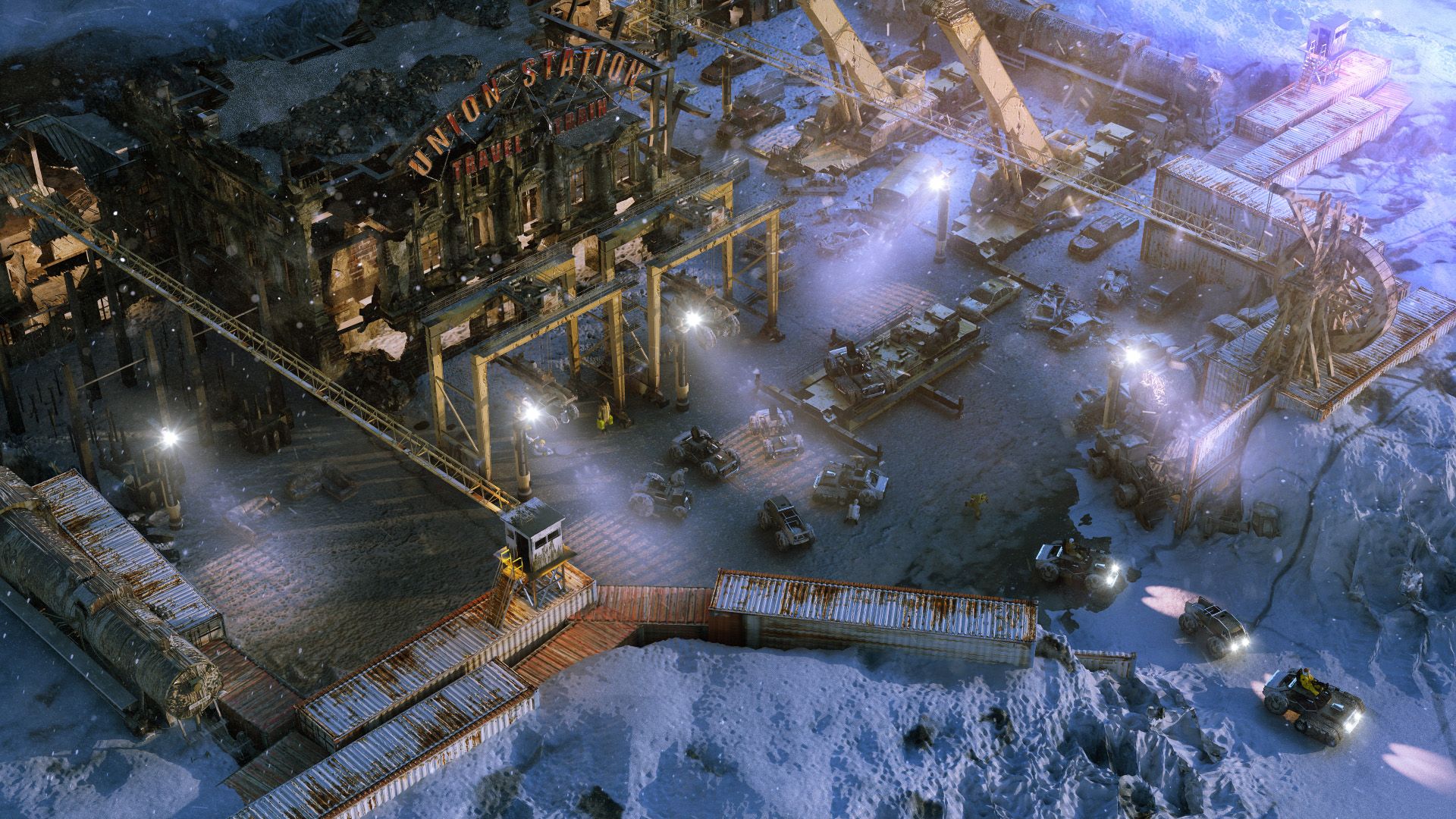
Was there any kind of back and forth with getting the rights to any particular songs? Anything you couldn’t get?
I actually was very involved with that process. I was super disappointed that we couldn’t get the rights to The Brady Bunch. So badly, I wanted to do a Brady Bunch remake in our weird, twisted way. But Sony had that. They also had The Courtship of Eddie’s Father, remember, “Best Friend?” I thought, that’s just crying for a remake! But they were both Sony, and it got into the issue with live performance streaming, and then also, what does it mean to be in a subscription service like Game Pass? We weren’t able to get over that hump in order to get that music. I think that will get worked out over time, but it’s so new for the studios to get their head around the subscription business, how it relates and what it means. I think they didn’t want to set precedent. We were so far ahead in terms of talking about those kinds of rights that it slowed it down. Those were a couple of songs where we weren’t able to do it.
I know that subscription stuff is pretty far out. Wasteland 3 is day one on Game Pass, right?
That’s correct.
And I played Wasteland 2 on PlayStation Now. They probably have their own vastly different contracts to be signed that’s so far beyond my comprehension.
Yeah. Again, the whole idea of streaming was just not something that existed back then, so they could not contemplate all these rights. The world changes so fast as it relates to technology. There’s a lot of old laws, old ways of doing business that just haven’t caught up with everything yet. We can put the soundtrack on Spotify. That’s okay. But putting out a DVD is not. There’s intricacies in the system.
And then Spotify is so easily integrated into PlayStation 4, it’s just like…
Yeah, why is that okay?
Right? I mean, it’s super fun when I’m playing a game with no soundtrack, or licensed music I don’t want to listen to, I can make the soundtrack whatever I want! But it’s just so weird. Legal stuff, whatever. New technology.
Indeed. Well, it’ll all work out over time. Some rights holders are more ahead of the others, or some worry more than others. It depends on who the rights holders are.
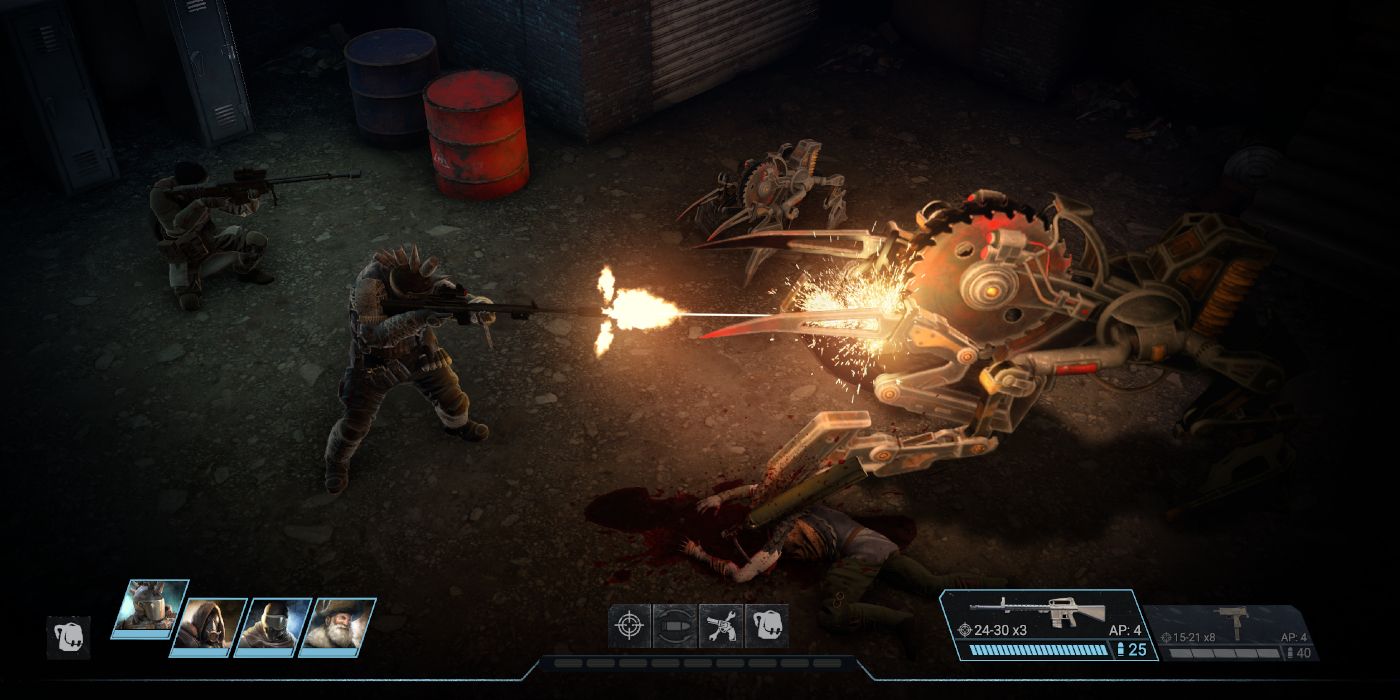
I want to step back a bit and go big picture. You start doing Wasteland 2, an unprecedented sequel, especially in the video game space. 30 years in video game time is like, a century compared to a movie. With Wasteland 3, is it inspired by any ideas you had written out for Wasteland 2 but had to cut, or was it a completely fresh start for part 3?
A little bit of both. We analyzed the things people gravitated towards and the things people didn’t like, so we learned our lessons from it. There was content we wanted to get into Wasteland 2 that I loved, but it was already a massive game that most people could barely finish because it was so big. Some missed areas wasn’t a problem. But, like, The Gippers. They’re a cult that worships Ronald Reagan. It’s so perfect. Of course, Reagan was around when we did the first Wasteland. We thought that would be great, but it never made it in. It became a big part of Wasteland 3. And with voice acting, when you hear the big huge mechanical Reagan talking like Reagan, it really sells the scene. It’s a great moment. So there was that. And then there was a lot of new material. We brought new writers on board. The writing, I think, really shines in this game. I watch the streams and read the user comments, and watching the reactions and watching what people type in the chat when they hear the dialogue, it’s priceless. I was watching a stream right before I got onto this interview, and I was crying I was laughing so hard, watching this one streamer interact with this foul-mouthed parrot. Just hearing how the chat was reacting to it, it was just a very funny moment. Great voice acting really took it to another level for us.
What were you expectations when Wasteland 2 was about to come out? You had a successful Kickstarter, but did you think it would transition into mainstream success the way it has?
We certainly hoped that would be the case! Before the Kickstarter, so many people would ask me, “Why aren’t you doing another game like this? We want another isometric RPG.” As I said in my Kickstarter video, we just couldn’t get a publisher to bite, which is why we reached out to the fans and said, “Hey, you guys say you want it, and we’ve been wanting to do it… What do you think?” And they ended up financing our vision. And then it just kept getting hotter. Pillars of Eternity came out, Divinity: Original Sin came out, and it was a nice re-affirmation that, yes, this is the kind of product that people really wanted, but it just wasn’t being done. I think Wasteland 2 helped reinvigorate that category of game.
With Wasteland 3, you’re pushing the genre forward in many ways, with the music and the visuals and the production values. In some ways, though, do you see the existence of this game as something of a victory lap coming off the success of Wasteland 2? Or would that be too complacent of an attitude to take? Do you get to rest on your laurels?
You never get to rest on your laurels. (Laughs) You have to pry yourself away from reading the negative reviews, because you’ll go, “No, why didn’t that person like it!” No… I’ve been in this business for a long time. I see all the things that are wrong. With every title I’ve ever shipped, there’s things that bother me. Right away, I want to do things better with the next one. I really enjoy the technology. Every year, the technology gets better and better. So whether it’s facial capture or motion capture or ray tracing… The things that are getting better and more prevalent, it’s more things you can add creatively, and you ask, “How can I use that in the world? How can I use that to make an impact on people?” I like the intellectual challenge of tying all the pieces together. This week, while I was waiting for it to come out, I was working on designs and things for stuff that’s five years away. As much I’ll sit around today and enjoy watching people stream all day… By next week, I’ll be writing down ideas for the next one. That’s just the nature of the beast.
With that forward thinking in mind, is it too early to say if there will be patches or something for next-generation PS5 and Xbox Series X versions of Wasteland 3?
Yeah, we’ll be doing something… I wouldn’t want to say what those things are, or my technical guy will kill me. But we’ll want to take advantage of some of those systems, and we want people who have those next-gen systems to play Wasteland 3.
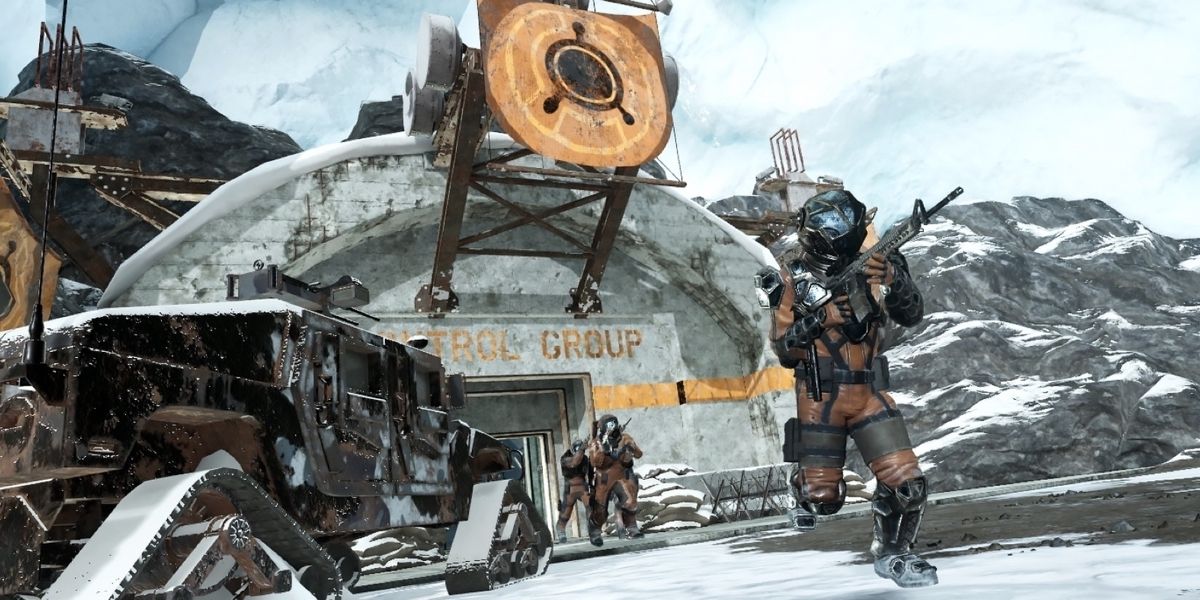
Going back to reading negative reviews, you also said that you look at what works and what doesn’t work while building the next game. How do you differentiate what doesn’t work with what an outspoken minority doesn’t like?
That’s a great question. For making these kinds of games, especially a role playing game, you want your core base to be happy. You’re not going to grow it beyond that if the core base is unhappy. Divinity: Original Sin is a great example of that, where they were able to achieve a huge success from a sales perspective, and with a strong core. We never lose sight of those guys. But there can be a very vocal minority who wants to keep it too far in the past. They are the group who would have been very happy if we had made Wasteland 2 exactly how it would have been if we did it in 1992. But that wasn’t something we wanted to do. I don’t know, it’s hard to say specifically because it depends on the issue, but we have a lot of spirited conversation internally of, “Is that too hardcore?” Like, “We know what they’re saying, but what they’re really wanting is this, and maybe we can deliver what they want in a slightly different way that isn’t going to take us back in time.” We have to be cognizant of where the bar is, and what’s happening as it relates to the competition in the space, whether it’s from a UI perspective, a music perspective, or a co-op perspective. Whatever we’re doing, we have to know what’s come before us. If we’re ignoring what’s been done all around us, and only focusing just on a small group, that’s probably going to be a problem. There’s somewhere in between “what’s happening in reality,” and “what does the core group want,” and we have to match those up.
I’m glad you mentioned co-op. I’m so psyched to play through the game with my brother online. The idea that we can split up, do different quests, and then meet up in the middle later, it’s so far out, and it seems incredibly complex for that level of freedom to not completely break the game in a million different ways.
Oh yeah. It’s been a nightmare, for sure! The edge cases are crazy. If you’re both in combat… Let’s say we have you tethered together the whole time and you can never be apart. That’s the straightforward thing to do, but it’s not what we did. You can be over in combat while your brother is having a conversation with somebody, and you yell for help, so he’s got to break out of that conversation, he’s got to run over and help. These games are already complicated, there’s 60, 80, or 100 hours of gameplay depending on how you play it. What people love about the game is all the reactivity, which is all the crazy different ways you can approach a problem. Then, you put co-op on top of that as an added twist? Yes. It’s been a tremendous… We spent more money on testing than on any game prior to this.
I imagine it’s flexible in a way, like, you can have two pros going at it to speedrun through the game, or you can have it where one person is really there to carry someone else, to provide an “Easy Mode” for someone who isn’t as skilled in the genre. Is that a consideration?
I mean, I guess… Yes in that you can bring somebody along, show them the ropes, and get them into it pretty quickly so they can understand what to do. What I think is fun about the way we designed it, is that it’s “Save game agnostic,” is the best way to describe it. You and your brother can play, and then he can go to sleep and you can keep playing. And then he can come back the next day and go, “Here’s our save game, here’s our characters, here’s where we’re at.” And you can continue on from the old save game from where you both left off, or he could invite someone else into his save game and they can continue from there. The save games are wherever you want to tee off from.
Man, that’s so cool. Okay, okay, one thing that’s interesting about the history of Wasteland is, as far as I know, it’s never been brought back wrong. In that it’s never been, say, brought back as a third person action game, or brought back as a Call of Duty clone. We’ve seen that happen with lots of old series, but not this one. Was that an ownership thing that you in particular were able to fend off, or was it just not the right time?
We get to do whatever we want. That’s the best part of a Kickstarter. As far as where you want to take a game, a lot depends on the mood of the room at the time, and historically, how far apart you are. We knew, with Wasteland 2, exactly what they wanted. We had to deliver that. If we had done a completely different type of product, it’s not what they wanted. As you get further in, you get people going, “Hey, can we do first person? That could be cool.” And we say, “Maybe, we’ll see.” We’ll think about it, but it’s not a guarantee. The dynamics of the room change all the time. We weight the pluses and minuses to make sure we deliver the experience we want to see. But more importantly, no matter what we do, we don’t want to give up the soul of the series, which is the incredible reactivity, great writing, dark humor, and all the things that make that universe really special. That can’t get lost no matter what you do.
Over the 30 years between Wasteland and Wasteland 2, did any publishers come around and go, “Hey, you’re not doing anything with that, can we churn something out? C’mon buddy, pal o’ mine. License that out to us, you’ll make a quick buck, it’ll be fun!” Anything like that?
We’ve had it on other ones… With Wasteland, I don’t know it… No, there was someone who wanted to turn it into a cheesy little mobile game, and we were like, “Nah, that doesn’t really… Not for this.” You could do a mobile game, but not what they were wanting to do. So yeah, I guess there was one situation that was like that.
Did you port the original Wasteland to mobile, or did I just make that up?
No. Well, Wasteland 2 is on Switch. That was super hard to get ported! An outside group did that. It was one of those things where we were like, “If you can do it, great! If not, so be it.” But no, we never took it to mobile.
At this point, Mary Ramos enters the Zoom conversation
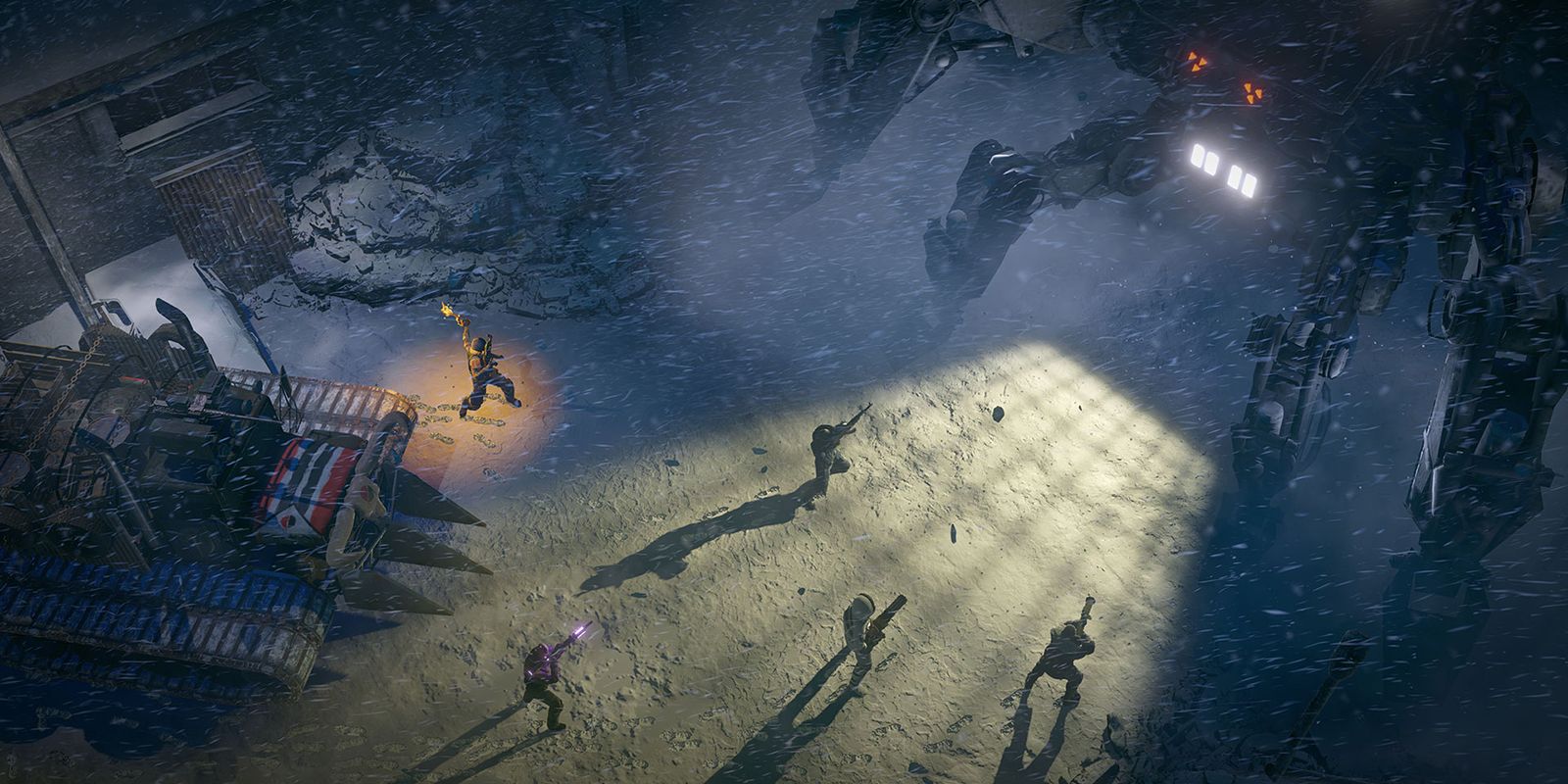
Hi Mary!
Mary Ramos: Hi.
We’ve talked a bit about your musical contributions, how Brian called you up and said he wanted to do a musical experiment with you, to incorporate a lot of 1980s period music, and lots of old-timey Americana standards. Is it like designing other facets of a production? Do you make, like, a vision board? Or do you come up with some playlists? What’s your approach when you sign on to a new project?
Mary Ramos: I’d never worked on a game before, but it was sort of a similar experience. When you’re working on a film, you’re helping to build the world of the story with music. I’ll usually start from the characters. I’ll make playlists for each character. Whether or not the music gets used, it helps me to focus my creative impulses for different characters and making sure they have different points of view, and then I’m focusing on character. There’s so many different ways you can approach something, and there’s so much music out there, it just helps to really ground it in the organic elements of the story. One of those is character, and the other is the world. I approached this the same way. This one was really fun and interesting because I didn’t get to see it. Usually I get to see something, I get to see a script and a rough assemblage of the picture. I didn’t have any visuals to work with except still shots. Brian was awesome in that he would explain the world to me, explain the story to me, so I knew there were cannibals and preppers. I knew it was this dystopian world. So we kind of started from there. We had some real fun creating this stuff. And going from the aspect of the bomb dropping at a certain time and the people’s basic folk music was stuff they grew up listening to in the 60s, 70s, and 80s. So that’s where you get Green Acres and some of these TV themes and things.
Brian Fargo: Some review came in today, Mary, it said, “I have to commend Wasteland 3’s music. I found the combat tracks, in particular, to be quite well done. What stands out is the additional work by Mary Ramos, most notable for supervising the Tarantino films. Many major encounters opt for music inspired by folk songs and church hymns, as well as slow and soulful remixes of Land of Confusion and Everybody Have Fun Tonight by Wang Chung. Almost all these songs stand out immensely. When they start playing, their impact on the scene is remarkably positive.” And it goes on and on. You don’t get people commenting on the music all that often, so it’s really great to see it.
Mary Ramos: That’s really cool. The world was a really interesting one to help create. That’s what was really fun about this project. And one of the things, too… In my job as Music Supervisor on films, one of the things is making sure I can get the rights to the music. I oftentimes don’t like to suggest things to a director that I don’t know if we can get it or not.
Brian Fargo: I explained how we couldn’t get the themes from The Brady Bunch and The Courtship of Eddie’s Father.
Mary Ramos: Right. And we did our best. We did find some great partners who got it and understood what we were going for, and that’s how we got some of the great songs that we did. But one thing he told me… Forgive me, I’m not a gamer yet, but I will be with this game… But there were things I needed to learn about rights clearances. We wanted our players to have full access and be able to put themselves online, playing the game without fear of being taken down over song rights. I didn’t want any kind of hindrances due to song rights. So, because of that, I started looking into songs that are in the public domain. And it just so happens that a lot of those are these Americana hymns, these “Go America!” types of songs. So I started thinking about what it would be like to make these songs into “outlaw psychobilly” renditions.
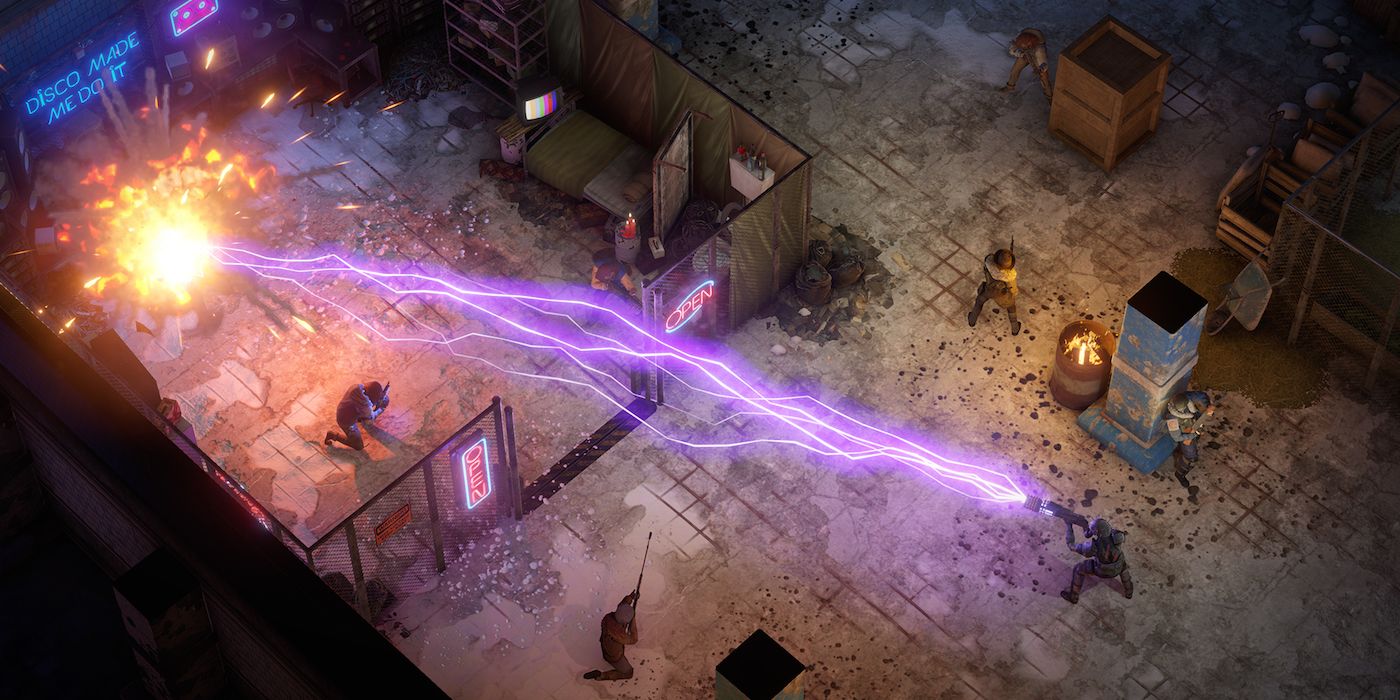
I’m thinking of the Union fight song from the trailer, that’s a full ten our of ten!
Mary Ramos: (Laughs) That’s where it got crazy-fun. To take a beautiful song, like Blood of the Lamb, and give it to Joshua James and have him to this creepy psychobilly version of it. It really works! I was happy with the music. We had some great artists I was able to work with, like Tyler Hilton, Ethan Allen from Gram Rabbit… Joshua James has this awesome echo-y, psycho sound to him.
Brian Fargo: He has a very haunting sound. We would do things with The Battle Hymn of the Republic and go, I like the concept, it’s patriotic, it scratches the boxes, but I’m not quite sure, and then Mary would come back with her version and it’d be like, “NAILED IT.” But on paper, you had to experiment. You weren’t quite sure. We had some things we didn’t like as much, that didn’t play out… Mary still complains about those. (Laughs) But it was that experimentation. Figuring out what felt right was just a creative process in motion.
Mary Ramos: It was fun to be sort of like a music producer, to kind of give direction to the artists and then deal with artists who got it. That was the fun part. We rarely had a “miss.” We rarely had something that came in that was like, *negative buzzer sound.* The only one that I was bummed out about was when Tyler Hilton did a Honky Tonk version of Amazing Grace that was sort of like Little Feat’s Dixie Chicken. It was just fun like a hootenanny.
Brian Fargo: It was too happy! We were like, “No, it’s too happy!”
Mary Ramos: We tried it, and we tried it against combat, and these guys were like, “It’s too macabre.” It doesn’t really work. That’s the one I was bummed about.
Will it be on a soundtrack album, an outtake somewhere, or will it rest on your hard drive forever?
Brian Fargo: We could put it out. We have the rights… Or we could get them. Maybe!
Mary Ramos: That would be great!
Brian Fargo: The Mary Ramos Mix!
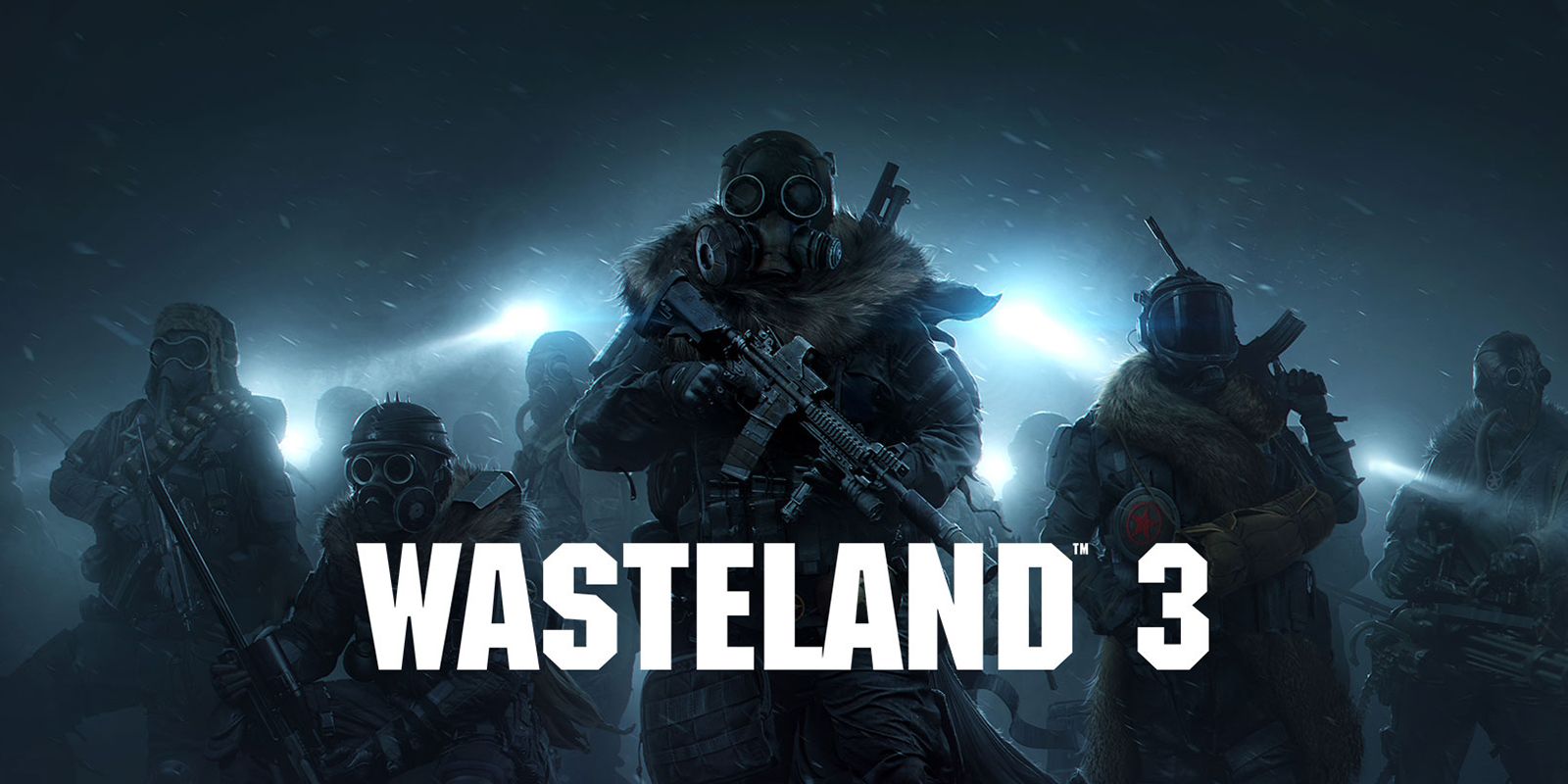
You said there were not as many misses as maybe you were expecting. But do you have a box or a hard drive full of unused Wasteland music?
Mary Ramos: Not much.
Brian Fargo: We have multiple renditions, where the artist did multiple renditions of a song.
Mary Ramos: That’s true.
They gave you options to choose from?
Brian Fargo: Yeah. So if you count that, there’s a few more, for sure.
The whole idea of the music in this game is so appealing to me, personally. My favorite TV show of all time is Miami Vice, which has so much musical storytelling. I feel like that definitely comes through in Quentin’s movies. I don’t know it for a fact that Quentin was inspired by that show, but, I mean, Don Johnson is in Django, so I feel like Quentin is probably a fan, he knows what’s up. And I imagine that’s why these guys came to you in the first place, right? Were they like, “We’ve seen you tell stories with music, we want you to do that with Wasteland?”
Mary Ramos: I think you’d have to ask Brian. Brian, did you know I worked with Quentin before you hired me?
Brian Fargo: We were going for that sound, so I thought, does he do it? Does someone else do it? Who does it? So I was poking around, and I read an article about you, and I was like, “Oh, this is the person we need! Let’s go talk to Mary!” We were wanting that vibe, and… By the way, Mary, I saw a big streamer the other day, and he was crazy for the game and he said, “This is like a post-apocalyptic Quentin Tarantino film.” He just said that. He didn’t know our whole story, but that was his reaction to the moments in the game, with the music and the dialogue both. That was kind of funny.
Mary Ramos: We have weird taste. (Laughs) I learned a lot from Quentin, working with him for almost 28 years or whatever. I’ve learned a lot from him. He is a genius. He creates his worlds and has stuff he loves from childhood and stuff. We bonded over music. I’ve learned a lot over the years. This was one where it was really fun to get my hands into the production and the creation of it. The one thing I wish we had done is a few more female voices.
Brian Fargo: I agree, yes.
Mary Ramos: We could have had some crazy radical character stuff in there. But next time.
Brian Fargo: I don’t know about you, but my tastes get stranger as life goes on, as I get older.
Mary Ramos: It mixes with the stuff you love, the stuff you gravitate towards in certain periods of your life. And that gets mixed it with the stuff you’re liking now.
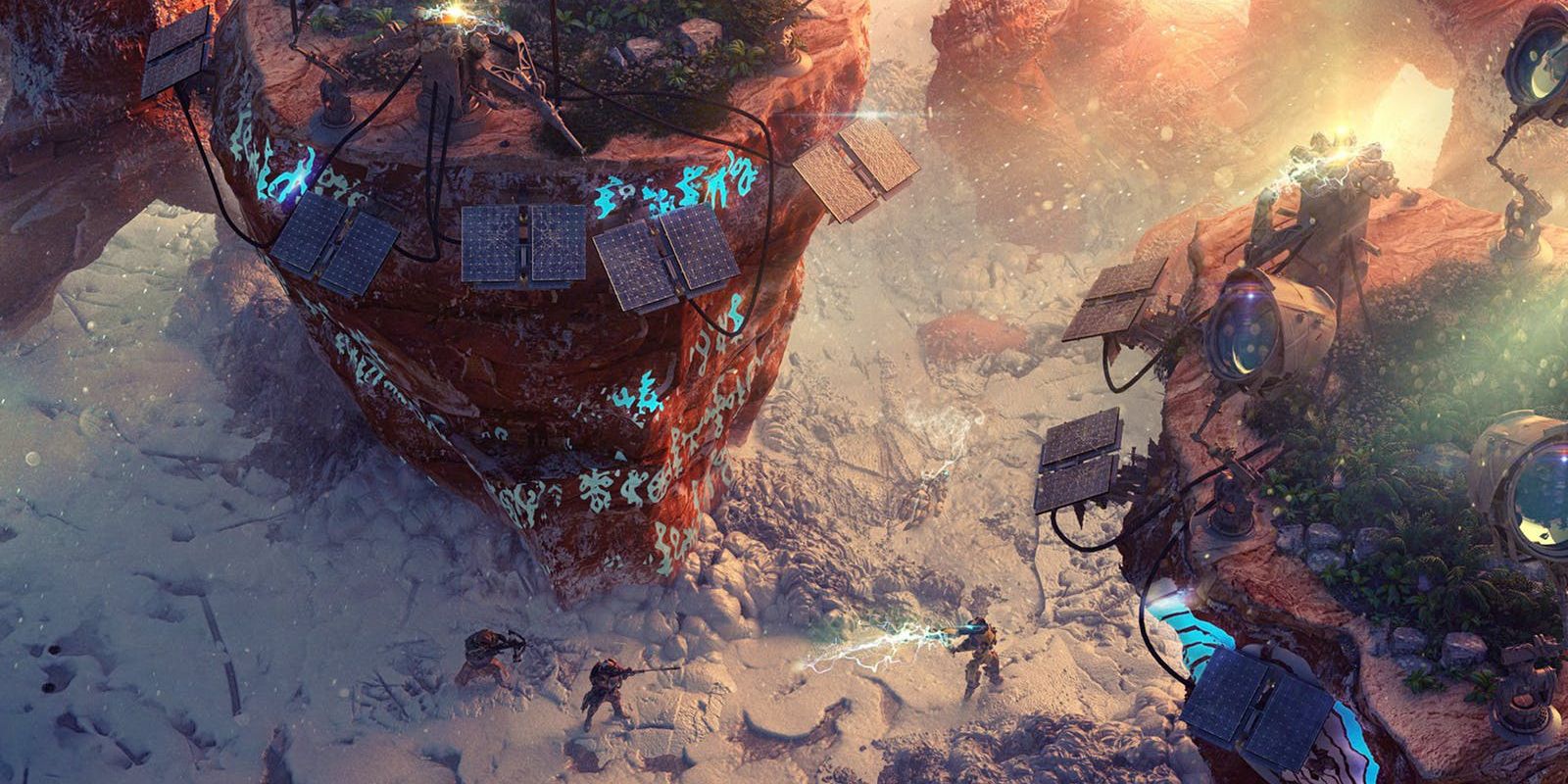
A lot of the music plays during these specific combat encounters. Brian, you mentioned not wanting to repeat songs any more than was absolutely necessary because it diminishes how special that particular fight is in the moment. And Mary, you mentioned not having as much visual reference as you otherwise would have in a different medium. Are there any kind of bespoke “music video” kind of sequences, that Miami Vice style of having a cutscene with a song playing over it and having that tell the story? Anything like that?
Mary Ramos: In my head, that’s what I thought it was going to be! But I didn’t have the visual reference. The only thing I had to make sure of was that the songs were interesting throughout. If it’s one “joke,” it only lasts a certain number of seconds. But if the song is going to work for all the purposes we needed, it needed to be interesting throughout. The focus of it was on making good music and then giving it to these guys and letting them mess with it.
Brian Fargo: It was fun, Mary would do one of the old songs in a newer remake and then afterwards we brought in a kids choir to do versions of the songs. When you’re going to The Patriarch’s Palace, since he’s uber-patriotic, we thought, what’s better than a kids choir? So it’s super creepy when you hear kids choir music during a combat scene. It really gives it a special feeling.
With that in mind, did Mary present anything that changed any of the specifics of game design?
Brian Fargo: I think, in the general sense, it was like, “Holy s*** this is working, we want more!” As opposed to changing any one particular scene, it was an experiement, Mary delivered, and it was great, so we decided to do as much as we could. I guarantee you, when we do work on a sequel, we’ll probably be talking about music much further into the process than we did on this one. Without Microsoft acquiring us, we wouldn’t have had the budget to do this. We always had grander ideas than we could afford. So this was great, it was like, “Okay, I have some extra bullets now, here’s one I want to use.”
Mary Ramos: That said, I think everything was pretty reasonable.
Brian Fargo: I’m not complaining! When you’re doing a crowdfunded budget, you’re on a shoestring. It wasn’t crazy, but it was more than we had.
You mean in terms of the extra funding you got from MIcrosoft, right. Right.
Mary Ramos: I remember, when we started, I was just getting the concept together, and we talked about the different types of music we wanted to use, the Denver DJ and everything, so I started pulling together indie outlaw bands and that kind of music and started sending you voices and bands that could perhaps do covers and stuff. Then we started really focusing in on the sound, and that’s when we came to the freedom of using some of these hymns that we could make our own thing for. That was a fun part about it. The hunting and the gathering aspect, and then coming to the realization of, “Oh, this could even be cooler!” Because I remember sending you things and you would say, “That sounds a little too much like a Fallout song,” or something. So I was learning as I was going. It became clear to me that, for us to be truly unique, we had to make our own stuff and make it super cool, so that’s what we did.
Brian Fargo: Mary picked up some great music that I loved, but I thought, they’re gonna call us derivative of Fallout, ironically, since that’s a title I helped create. So I had to not be derivative of something I helped generate. So I said, “It’s great, but we need to do something that’s different so we don’t give that impression.”
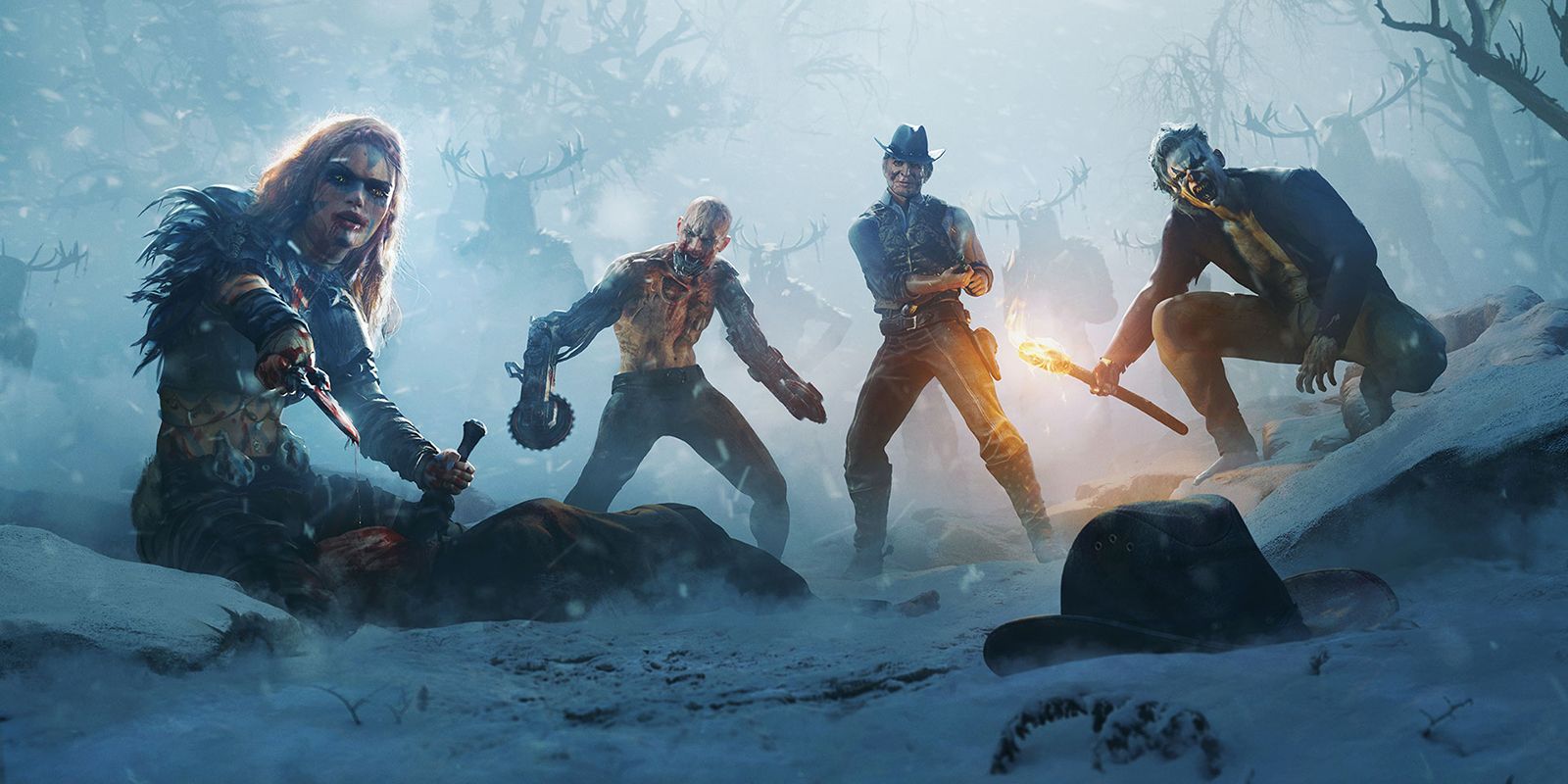
It’s like when John Fogerty got sued for writing songs that sounded too much like Credence Clearwater Revival.
Mary Ramos: (Laughs) Yeah!
I’m hip, I know my stuff! I know my rock and roll history, thank you, thank you. Well, thank you guys so much, the game looks incredible. Mary, Once Upon a Time in Hollywood is one of my favorite movies of all time. I spent pretty much the whole film crying like a baby. There’s so many layers of meaning, and it has an element of celebrating the notion of old-timey heroes and the black-and-white idealism that gives us comfort in difficult times… Actually, that’s kind of played with in Wasteland, to an extent.
Mary Ramos: It’s a very timely game.
We were talking about the Gippers before…
Brian Fargo: We ended up putting a warning, if that’s the right word… A disclaimer, at the front of the game, saying anything that matches up with today’s political events is purely coincidental and was written years ago. Even down to the language and things that were happening, things were so on the nose that we were afraid people would say, “Did they change their game in order to sell more copies to take advantage of the political climate?” And that’s not something we would do. We had to put a disclaimer in there, and we even took some things out. We’re writing for this crazy post-apocalyptic universe, and here’s reality catching up. Even down to the fact that the game talks about “defunding the Marshals” in the game! They’re gonna think we did that on purpose, but we didn’t. It was written years ago. We didn’t want people to think we were doing it on purpose.
Mary Ramos: Ripped from the headlines! Pretty crazy.
Wasteland 3 is out now on PC, Xbox One, and PlayStation 4.




